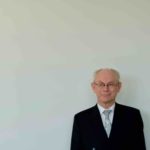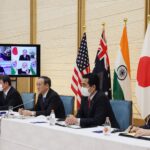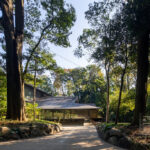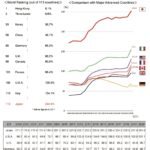The Kansai region centered on Osaka is drawing attention to its long history of creativity and innovation in its bid to host Expo 2025.
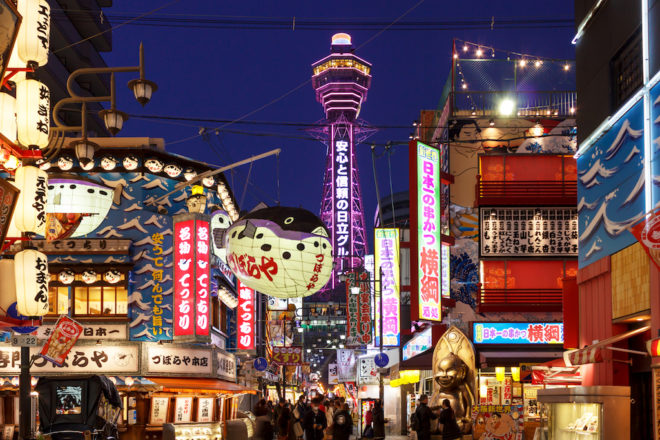
Osaka is known as “Japan’s kitchen.” The city offers great “local food” and down-to-earth hospitality, not to mention a colorful night life.
According to 2018 Travel Trend Forecast by Airbnb, a leading global private lodging website, Tokyo was on top among the most popular cities chosen by a total of more than 140 million guests who used more than three million registered accommodation facilities as travel booking destinations in the first half of 2018, followed by Paris, Osaka, New York and London. Based on booking data of Airbnb for the first half of 2018, nature lodges (700% growth) and ryokans (600%), traditional Japanese inns, are surging the most in bookings, suggesting that travelers are increasingly drawn to accommodation that is rustic and unique, rather than simply comfortable.
In addition, according to Mastercard’s World Travel Destination Ranking 2016, a ranking of the world’s 132 cities as popular travel destinations, Osaka came out on top (a growth rate of 24.15%) in the ranking of rapidly growing travel destinations from 2009 to 2016, with Tokyo in fifth place (a growth rate of 18.48%).
 Behind the growing popularity of the Kansai region centered on Osaka are traditional elements that differ from those found in Tokyo, popular culture, the warm hearts of the Kansai people as reflected in its hospitality nurtured throughout a long history. Osaka’s comfort and safety as a travel destination is also evaluated highly by visitors.
Behind the growing popularity of the Kansai region centered on Osaka are traditional elements that differ from those found in Tokyo, popular culture, the warm hearts of the Kansai people as reflected in its hospitality nurtured throughout a long history. Osaka’s comfort and safety as a travel destination is also evaluated highly by visitors.
2025 Expo Osaka-Kansai
Osaka-Kansai, the second largest urban area in Japan, is a candidate to be the host of Expo 2025, along with Yekaterinburg, Russia and Baku, Azerbaijan. The host will be decided by the General Assembly of the Bureau International des Expositions (BIE) in November.
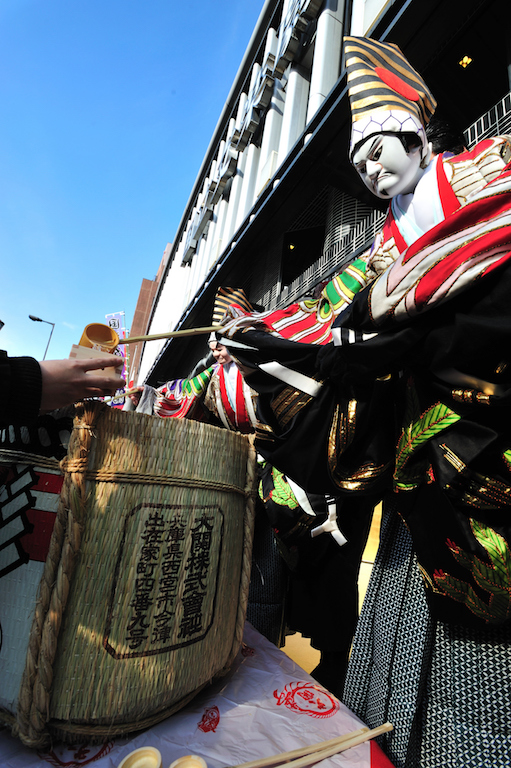
A bunraku puppet serves sake from a freshly opened barrel at the entrance of the National Bunraku Theatre in Osaka before the always eagerly anticipated New Year Bunraku Performance.
The Kansai region, and particularly Osaka, played a political and economic role for many years in Japanese history. It is rich in tradition and culture, is equipped with world-level high urban functions and is easily accessed from the rest of the world. Under the theme of “Designing Future Society for Our Lives,” the Osaka-Kansai Expo, which the united Kansai region is seeking to attract, is making a proposal to host the expo as the “People’s Living Lab,” seeking a way in which people around the world can live healthier, richer lives. The venue is Yumeshima (an area of about 155 ha), an artificial island located about 10 kilometers from the center of Osaka. The expo would be held for 185 days from May 3, featuring beautiful greenery, to November 3, featuring beautiful fallen leaves, and is expected to attract 28 million visitors. In addition, the expo is also expected to attract up to eight billion virtual visitors who will enjoy virtual experiences on the Internet from remote locations by making use of virtual reality (VR) and augmented reality (AR), with a tentative calculation of around two trillion yen in economic ripple effects.
If it is decided that the expo will be held, it will be the first one since Expo ‘70 Osaka (about 64,220,000 visitors), Expo ‘75 Okinawa (about 3,490,000 visitors), Expo ‘85 Tsukuba (about 20,330,000 visitors), Expo ‘90 Osaka (about 23,120,000 visitors) and Expo 2005 in Aichi (about 22,050,000 visitors).
Diverse Values and Energy
 The Kansai region (Osaka, Hyogo, Wakayama, Shiga, Kyoto, Nara, Tottori and Tokushima Prefectures), including Osaka, which is hoping to attract the expo, has a population of more than 20 million and total production of 793 billion dollars. The region was a political, economic and cultural center for many years in history, and it is still full of diverse values and energy and is developed by people’s enterprising spirits and a cool mind for foresight regarding the next era. In addition, the region also circulates rich cultures, such as diverse food culture from the popular okonomiyaki to Kyoto cooking, traditional performing arts represented by popular comedies and bunraku puppet theater, a global intangible asset, and many world-famous historical structures and World Heritage sites. About eight million travelers visit the region from abroad each year.
The Kansai region (Osaka, Hyogo, Wakayama, Shiga, Kyoto, Nara, Tottori and Tokushima Prefectures), including Osaka, which is hoping to attract the expo, has a population of more than 20 million and total production of 793 billion dollars. The region was a political, economic and cultural center for many years in history, and it is still full of diverse values and energy and is developed by people’s enterprising spirits and a cool mind for foresight regarding the next era. In addition, the region also circulates rich cultures, such as diverse food culture from the popular okonomiyaki to Kyoto cooking, traditional performing arts represented by popular comedies and bunraku puppet theater, a global intangible asset, and many world-famous historical structures and World Heritage sites. About eight million travelers visit the region from abroad each year.
The effort to attract the expo is intended to align with global events that will be held in rapid succession, such as Rugby World Cup 2019, the Olympic and Paralympic Games Tokyo 2020 and the World Masters Games Kansai 2021, and to be the trigger for the continuing growth of Osaka, Kansai and Japan. As mentioned above, Osaka has hosted two expos and attracted 87,300,000 visitors. The city also has the culture, mindset and safe, comfortable environment to entertain visitors from Japan and abroad.
In this connection, according to The Global Liveability Index 2018 published by the Economist Intelligence Unit, Osaka ranked top of the ten most livable cities (Tokyo was seventh); according to the Safe Cities Index 2017, Osaka ranked third (Tokyo was on top). According to the Index, Osaka came top in the Top 10 in health security (Tokyo was second) and was third in the Top 10 table in personal security (Tokyo was fourth).
From Expo ’70 to Expo 2025
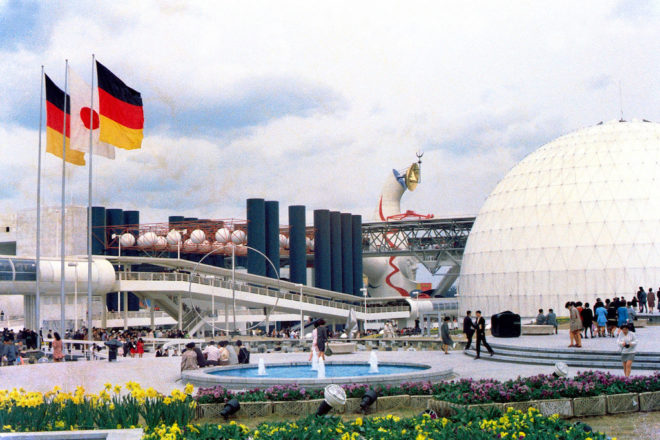
Okamoto Taro’s 70-meter “Tower of the Sun,” the symbol of Expo ’70, still stands tall at the Expo Commemoration Park in Suita, Osaka.
Expo ’70 was an event that symbolized Japan’s rapid growth, since it was held after the high-speed economic growth period from 1954 to 1973 and the Tokyo Olympic Games in 1964. In 2005, in the middle of a prolonged economic slump after the ensuing stable growth period, Expo 2005 was held with the theme of “Nature’s Wisdom” and attracted 22,050,000 visitors, exceeding the goal of 15 million.
Fundamentally speaking, expos intended for educational purposes were the triggers for creating and disseminating new technologies and products and played a significant role in achieving richer lives for people, such as with the elevator at the New York Expo in 1853 and the telephone at the Philadelphia Expo in 1876. Expo ’70 introduced the cordless telephone, the electric vehicle and the moving sidewalk, and EXPO 2005 introduced Linimo (magnetic levitation train line), an admission ticket containing IC chips, the Automated External Defibrillator (AED), the next-generation traffic system and dry mist.
In a social situation where people are shifting from wishing for material wealth to psychological wealth, what the Osaka-Kansai Expo, whose theme is “Designing Future Society for Our Lives,” seeks to propose can be seen in the sub-themes.
One is “How to Lead a Healthy Life in a Diverse Manner” and the other is “Sustainable Socioeconomic Systems.” The former is a society in which the Sustainable Development Goals (SDGs) set by the United Nations will be achieved, and the latter is about realizing a Super-Smart Society (Society 5.0), a Japanese national strategy that was proposed in the 5th Science and Technology Basic Plan in 2016. The original concept, “Japan’s Initiatives — Society 5.0,” was introduced to the Council for Science, Technology and Innovation (CSTI) by KEIDANREN (Japan Business Federation).
As messages for attracting the expo, Sakakibara Sadayuki, Honorary Chair of KEIDANREN and Chairman of the 2025 Japan World Expo Committee, says, “‘Society 5.0’ is designed to realize a future where people’s lives and society are optimized by making full use of innovative technologies such as IoT, AI, robots, and Big Data. The future society we aim to realize is a society in which global problems, such as problems including medical and healthcare, food and agriculture, the environment and climate change, energy and resources, safety and disaster prevention, and human and gender equality, are solved. Such a society would be the precise embodiment of a society in which the United Nations’ Sustainable Development Goals (SDGs) have been achieved. We, Japan, wish to be a lead contributor in the efforts to transform our world into a society in which all SDGs are fully achieved. By being the frontrunner in finding solutions to SDGs, we aim to achieve our own development as well as that of the whole world.”
Society 5.0
 Society 5.0 is a strategy of aiming to achieve a fifth new society after the hunter-gatherer, agrarian, industrial, and information societies. It aims to achieve a Super-Smart Society that will make people wealthy by making the utmost use of ICT and integrating cyber spaces with physical spaces (real spaces). This strategy is intended to provide the necessary information when it is needed through the Internet of Things (IoT) and Artificial Intelligence (AI) and to lead to specific social innovations with solutions to the aging population and declining birthrate, depopulation in local regions and wealth gaps as a result of technologies, such as robots and driverless vehicles. These will lead to the elimination of a sense of helplessness and the realization of a society in which people can be hopeful, a society in which people can respect each other beyond generational borders and a society in which everyone can work comfortably.
Society 5.0 is a strategy of aiming to achieve a fifth new society after the hunter-gatherer, agrarian, industrial, and information societies. It aims to achieve a Super-Smart Society that will make people wealthy by making the utmost use of ICT and integrating cyber spaces with physical spaces (real spaces). This strategy is intended to provide the necessary information when it is needed through the Internet of Things (IoT) and Artificial Intelligence (AI) and to lead to specific social innovations with solutions to the aging population and declining birthrate, depopulation in local regions and wealth gaps as a result of technologies, such as robots and driverless vehicles. These will lead to the elimination of a sense of helplessness and the realization of a society in which people can be hopeful, a society in which people can respect each other beyond generational borders and a society in which everyone can work comfortably.
The Flagship Project shown by Society 5.0 has two major pillars. One is automation, that is, the realization of the next-generation mobility system, including autonomous driving and the smartization of the entire public transit system. The other is a project that involves the construction of the next-generation healthcare system. This aims to build next-generation healthcare systems and extend healthy life expectancy by having medical organizations and nursing care service providers provide services that are optimized for individuals and by promoting prevention and health promotion by insurers and individuals.
Osaka Governor Matsui Ichiro, who is leading the campaign to attract Expo Osaka-Kansai, has put forward the key phrase “Back to ten years old with the Expo.” According to an estimate compiled by the Ministry of Health, Labour and Welfare, the average life expectancy of Japanese people (87.14 for women and 80.98 for men in 2016) is said to be 9 to 12 years old longer for both men and women than the healthy life expectancy of enjoying daily life without problems. The campaign is intended to promote treatment for and research on dementia, especially with regenerative medicine using iPS cells in which Professor Yamanaka Shinya, director of The Center for iPS Cell Research and Application (CiRA), Kyoto University undertook successful research and development, to achieve a society in which people can enjoy longer, healthier and more active lives, to show that vision through an expo and to contribute to global issues from the Kansai region, especially Osaka.
A specific example of “Back to ten years old with the Expo” is measuring vital signs. The campaign aims to ask visitors to put on a digital device for measuring their pulse, heartbeat, blood pressure, electrocardiograph and blood oxygen concentration using sensors so that they can check their physical condition and undergo health check-ups, and can prevent the accumulation of fatigue and heat stroke and dehydration on the basis of the results. It may also make proposals on users’ diets and exercise habits and provide measures for analyzing data to seek a new way of boosting health.
Governor Matsui says, “In 2025, Osaka and Kansai will be an experimental lab of creation for Designing Future Society for Our Lives. The new technology and services born here will be proposed and provided to countries around the world, thereby contributing to the establishment of a sustainable society on a global scale.”
Osaka Can Bring About Changes
Today, the digital revolution is taking place in every area of society all over the world with the explosive spread of ICT devices and the social implementation of AI, big data and IoT. Global capital runs into a new market of innovative digital products, services and systems. Japan is also keen on research and development, but lags behind in system reforms and deregulation. There is a certain degree of pessimism and a sense of helplessness regarding this situation.
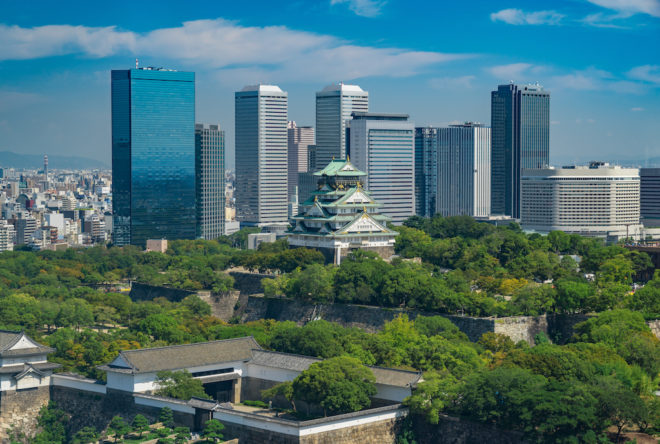
The main financial, shopping and entertainment district of Osaka viewed across the famed castle grounds
Osaka and Kansai have something that other areas in Japan do not, however. One example is the Omi merchants’ “Sampo-yoshi” spirit. This spirit emphasizes “business through which both the buyer and the seller can be satisfied” and “business that enables you to make social contributions.” This spirit spreads widely over the country and supports more than 3,300 longevity companies with a history of more than 100 years. Super longevity companies include Kongogumi, the world’s oldest temple and shrine construction company that was founded in Osaka in 578. In addition, it was also in Osaka that the Dojima Rice Exchange, the world’s first futures market that is equipped with today’s basic systems, was built in 1730. Osaka and Kansai, which have a culture of creating and developing this spirit and ideas, are suitable locations for seeking a new future economic and social system.
Organizations and companies that support the realization of changes are concentrated in this area.
For example, the latest global research bases in areas from the environment to life science, such as CiRA, Keihanna Science City, Osaka Bio Headquarters, KOBE Biomedical Innovation Cluster and Harima Science Garden City, have been developed, and corporations and small and medium-sized enterprises with highly advanced manufacturing technologies that support these bases are concentrated in this area. Today, companies headquartered in this area include Panasonic and Kyocera, which are electrical manufacturers, Keyence, Nidec, Murata Manufacturing, Rohm and Omron, which are leading manufacturers of sensors and control devices, Horiba, a manufacturer of environmental measurement devices, Takeda Pharmaceutical, Takara Bio, Shimadzu and Suntory, which engage in the pharmaceutical and medical industries, Daihatsu Motor, Iwatani, Asics, Mizuno and Nintendo and Itochu, a sogoshosha that has inherited the “Sampo-yoshi” spirit and where Higashiosaka City, an agglomeration of manufacturing business, exists.
Osaka and Kansai have the traditional spirit and environment for creating specific innovations in the future.
A Presentation of the Japanese Model
As mentioned above, the keywords of Expo 2025 are SDGs and Society 5.0. The government and economic organizations are leading both of these and taking on the challenge of structural innovations and building the foundations for them.
Behind these aspects are many issues such as depopulation, the aging population and declining birthrate, the concentration of things and people in cities, and energy and environmental limitations. It is necessary to change the social and economic systems. Japan calls itself, so to speak, an “issue advanced country” and needless to say, this shows a sense of crisis. But it can also be said that Japan sees the major opportunity of creating new value and showing a vision for future society ahead of the rest of the world as a frontrunner tackling many of the issues facing humankind.
Expo Osaka-Kansai, which is proposing the theme of “People’s Living Lab,” is the opportunity to clarify Japanese issues, build up an original Japanese model and make presentations, and a great opportunity to contribute to the world.
MIZUNO Tetsu is a freelance writer.

